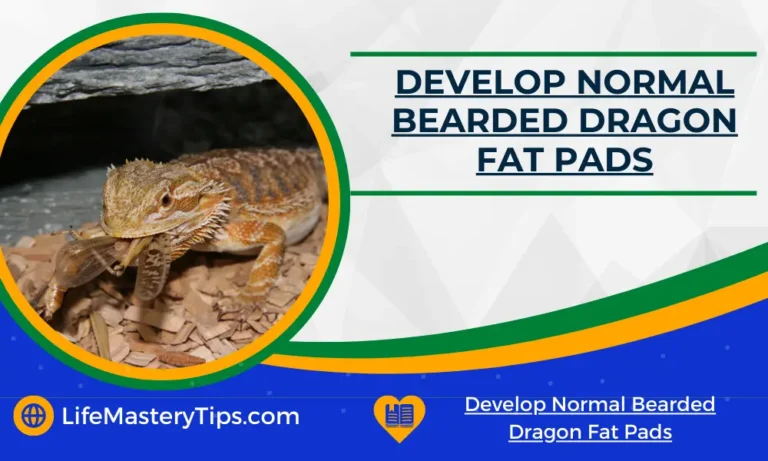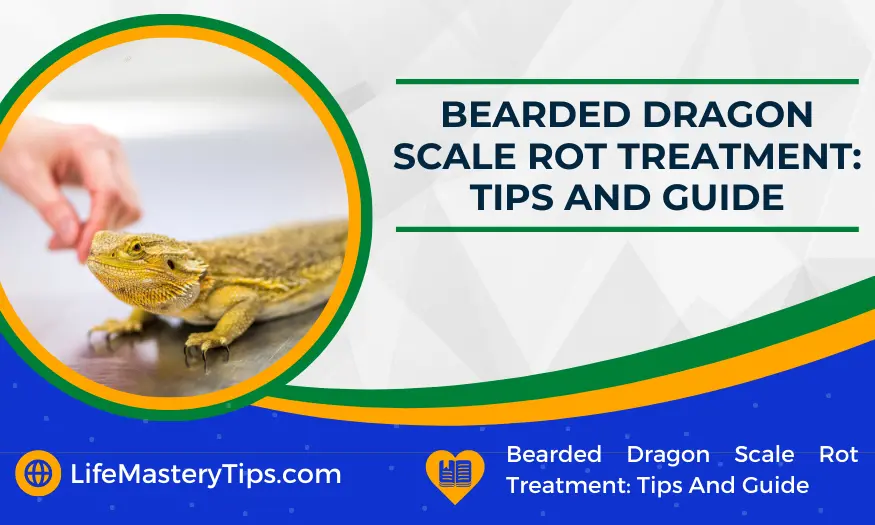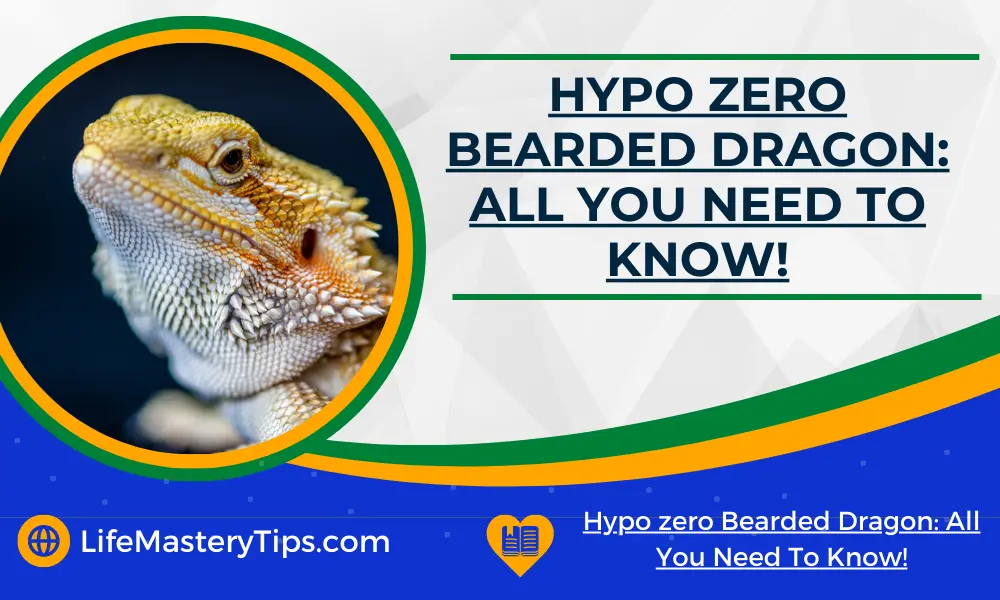Do you have a bearded dragon? Bearded dragons (Pogona vitticeps) are fascinating reptiles known for their unique appearance and engaging personalities. As responsible pet owners and enthusiasts, it’s important to ensure the optimal health and well-being of these creatures. One aspect of their overall health is the development of normal fat pads. Fat pads in bearded dragons serve various physiological functions, including energy storage, thermoregulation, protection, and hormone production.
Another Interesting Read: Bearded Dragon Cross Stitch Pattern – Tips and Tricks
Fat pads are important for bearded dragons because they provide insulation and can help regulate their body temperature. By following our guide, you’ll be able to help your dragon develop normal fat pads and keep them healthy and happy.
What are Fat Pads
The first thing you need to know is that there are two types of fat pads on a bearded dragon. There is the subcutaneous fat pad, which is the layer of fat under the skin, and then there is the visceral fat pad, which surrounds and protects the internal organs. Both types of fat pads are important for your bearded dragon’s health and well-being.
Subcutaneous Fat Pads
The subcutaneous fat pads are primarily used as a source of energy for your bearded dragon. When food is scarce or your bearded dragon is not able to eat enough food to meet its energy needs, the body will break down these fats and use them for energy. This helps to keep your beardie alive during times of stress or illness.
The subcutaneous fat pads also help to insulate your bearded dragon’s body and protect it from temperature extremes. This is why you will often see obese beardies basking in the sun with very little concern for the heat. They have so much insulation that they can tolerate temperatures that would be lethal for a thinner dragon.
Visceral Fat Pads
The visceral fat pads are located around the internal organs and help to protect them from injury. These fats act as a cushion for the organs and help to absorb impact in the event of an accident or fall. The visceral fat pads also help to regulate body temperature by trapping heat near the organs.
Both types of fat pads are important for your bearded dragon’s health and well-being. A healthy beardie will have a moderate amount of fat, not too much or too little. If you think your bearded dragon may be overweight or underweight, talk to your veterinarian about the best way to get them back on track.
Why do Bearded Dragons develop Fat Pads
Bearded dragons are lizards that are native to Australia. They get their name from the spines on their necks and jaws, which resemble a beard. Bearded dragons are popular pets because they are relatively easy to care for and are gentle by nature.
Bearded Dragon Develop Fat Pads
One thing that you may notice about your bearded dragon is that they develop fat pads. These are deposits of fat that can be found on their sides, near their back legs. While you may think that your bearded dragon is getting chubby, these fat pads serve an important purpose.
These fat pads help to store energy for your bearded dragon. They can use this stored energy when they need it, such as during hibernation or when food is scarce. Fat pads also help to insulate your bearded dragon and keep them warm.
How to tell if your Bearded Dragon has Fat Pads
If you think your bearded dragon may have fat pads, there are a few things you can look for.
#1 – Check the tail
One of the most common places for fat pads to develop is on a bearded dragon’s tail. If you notice that your bearded dragon’s tail has become thicker than usual, it may be a sign of fat pads.
To check if your bearded dragon’s tail is thicker than usual, you can gently lift the tail and compare it to pictures of healthy tails online. If the tail seems significantly thicker, it’s best to take your bearded dragon to the vet for a checkup.
#2 – Check the sides
Another common place for fat deposits to show up is on the sides of a bearded dragon’s body. To check for this, simply run your fingers along your bearded dragon’s sides. If you can feel small, hard bumps under the skin, your bearded dragon likely has fat pads.
Of course, it’s always best to take your bearded dragon to the vet for a professional opinion. However, checking for fat pads at home can give you a good idea of whether or not you need to take your bearded dragon in for a checkup.
#3 – Check for other symptoms
In addition to checking for fat pads, you should also keep an eye out for other symptoms that may be associated with obesity. These include a lack of energy, difficulty moving, and difficulty shedding.
If you notice any of these symptoms in your bearded dragon, it’s best to take them to the vet as soon as possible. Obesity can lead to a variety of health problems, so it’s important to catch it early and get your bearded dragon on a healthy diet and exercise plan.
#4 – Talk to your vet
If you’re ever unsure whether or not your bearded dragon has fat pads, the best thing to do is to talk to your vet. They will be able to give you a professional opinion and help you create a plan to get your bearded dragon back on track.
Obesity is a serious problem in bearded dragons, so it’s important to be proactive about checking for fat pads.
#5 – Keep an eye on your dragon’s weight
One of the best things you can do to prevent obesity in your bearded dragon is to keep an eye on their weight. You can do this by weighing them regularly and keeping track of their eating and exercise habits.
If you notice that your bearded dragon is starting to gain weight, it’s important to take action immediately. Making sure your bearded dragon stays at a healthy weight will help them stay happy and healthy for years to come.
Conclusion – Develop Normal Bearded Dragon Fat Pads – The Complete Guide
Developing normal fat pads in bearded dragons is crucial for their overall health and well-being. A balanced diet, appropriate feeding schedule, portion control, optimal environmental conditions, regular exercise, and veterinary care all contribute to the healthy development of fat pads. By following these guidelines, you can ensure that your bearded dragon thrives with well-defined fat pads, allowing them to lead a happy and healthy life.
If you have any questions or concerns about your bearded dragon’s fat pads, please consult with a qualified reptile veterinarian. Thank you for reading!
You Might Also Like:




